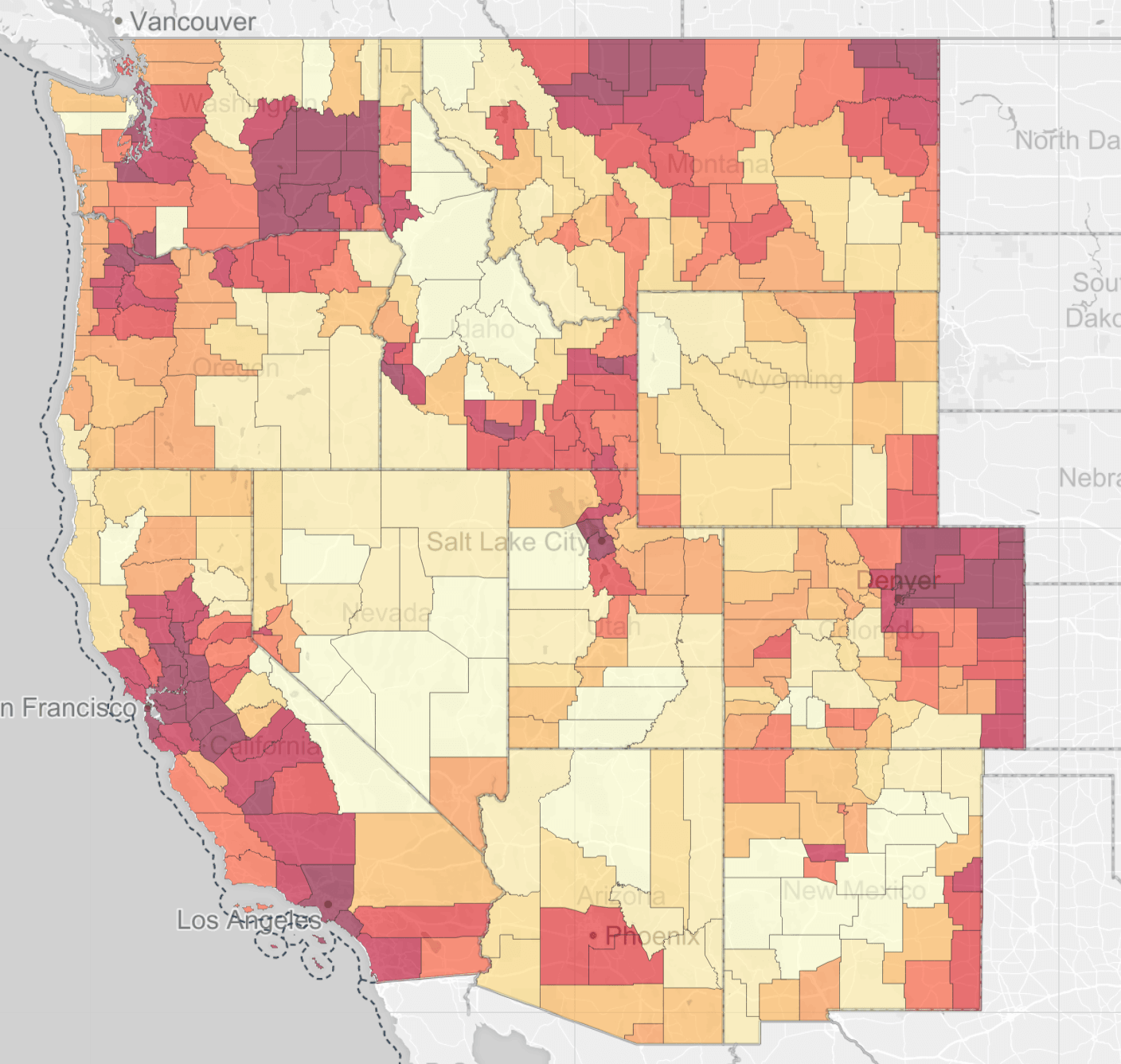What appeared to be a KOTA teevee hit piece on environmentalism, even featuring quotes from earth hater Rep. Cynthia Lummox (R-WY), turned out to be a hit piece on the Anthropocene.
Pyne has done extensive research into the history of wildfire in the Black Hills.
Still more:
Humans have triggered a trophic cascade. The Greater Missouri Basin supplies water to 92 million Americans: it's at risk to sprawl adding to the disappearance of the American West. Wyoming is just the tip of another dying glacier in Yellowstone.
From the wide open plains of Wyoming to the breathtaking forests in Colorado, when most people think of the American West, they imagine an open space untouched by human activity. But, a new report says that pristine country is being eroded at an alarming rate. "Really what we are seeing right now in the West is that urban sprawl and energy development are driving natural area loss fastest in the West," said Matt Lee-Ashley with the Center for American Progress. [Is the American West disappearing?]Turns out Wyoming is being hit the hardest experiencing the largest area modified by human development between 2001 and 2011.
Despite the bombastic assertions of some politicians that the West is “locked up” and “off limits” to mining, drilling, and logging, only 12 percent of lands in the West are actually protected from development. Of the more than 250 million acres of land overseen by the U.S. Bureau of Land Management in western states, the oil and gas industry can drill on 9 out of 10 acres. [Center for American Progress]According to the Bureau of Land Management in Montana and the Dakotas fire danger is still very high in the sage steppe and northern Rockies. The Roaring Lion Fire in the Bitterroot Mountains of Montana is burning homes within the Wildland/Urban Interface: a place where humans shouldn't be building at all.
Anyone having the opportunity to walk through the Roaring Lion fire next spring or summer will be blessed with a cacophony of birdsong accompanied by a mushroom, wildflower and pollinator show unlike anything anywhere else on this planet. Fire-killed trees attract legions of insects that flourish in the wood beneath the charcoal bark and in the new shrubs and flowers. Many bird species seek out severely burned forests specifically for this rich insect food source. One species in particular, the black-backed woodpecker, occurs in astronomically greater numbers in burned than in unburned forests, and in the more severely burned portions of those forests as well. The black-backs excavate their nest holes in the dead trees, which then provide nesting sites for other animals that can’t make their own nest cavities. No other woodpecker in the world is as adept at extracting beetle larvae from fire-killed trees, and it has become an icon for the ecological importance of severely burned forests. [Richard Hutto, University of Montana]And:
Plenty of partisans would prefer we let nature sort out the imbalances, not pretend, with costly hubris, that we know enough or are skilled enough to do the right thing. People caused the problem; removing them altogether is the surest means to set matters right. Less active management, not more, is the way to reconcile past conditions with future wishes. Tallgrass prairie requires fire. Probably most tallgrass environments burned every three years or so before European settlement. Longleaf pine, once pervasive on the southeastern coastal plains, burned like a savanna, its wiregrass understory carrying flames among the woods nearly annually. Its western counterpart, ponderosa pine, also behaved like a grassland with big trees clumped throughout it. Likely it burned every 3-8 years. [Stephen Pyne, Recreating forests of the past isn’t enough to fix our wildfire problems]In a twitter exchange with this blog Hutto disagreed with Pyne saying: "Unfortunately, Stephen Pyne offers a shockingly uninformed view of severe fire here. '...outlier researchers insist that severe fires have always been a part of the scene. Mainstream scientists disagree' is wrong. switch 'mainstream' and 'outlier' (he's labeling those he disagrees with as 'outliers' when they are solid scientists)."
Pyne has done extensive research into the history of wildfire in the Black Hills.
Still more:
According to Max Moritz, a wildfire specialist with the University of California Cooperative Extension based at UC Berkeley, past computer models of wildfires have largely ignored humans and too many people think simply in terms of how much fuel there is to burn. But the population in an area, where people live, and how many roads there are, all affect the behavior of fires and their risk to people. [The Push and Pull of Forest Fire Management]A protest led by American Indians and those opposed to the construction of the Dakota Access Pipeline through North Dakota has stopped movement on the project citing potential damage to waterways. A tribal chairman has been arrested.
Humans have triggered a trophic cascade. The Greater Missouri Basin supplies water to 92 million Americans: it's at risk to sprawl adding to the disappearance of the American West. Wyoming is just the tip of another dying glacier in Yellowstone.
#WolfCreek is a remote #CanadaLynx, elk & deer #migration corridor. Development would fragment it. @wildlandsnetwrk pic.twitter.com/FUQ99Y3sSf— SJCAlliance (@SJCAlliance) August 18, 2016

No comments:
Post a Comment